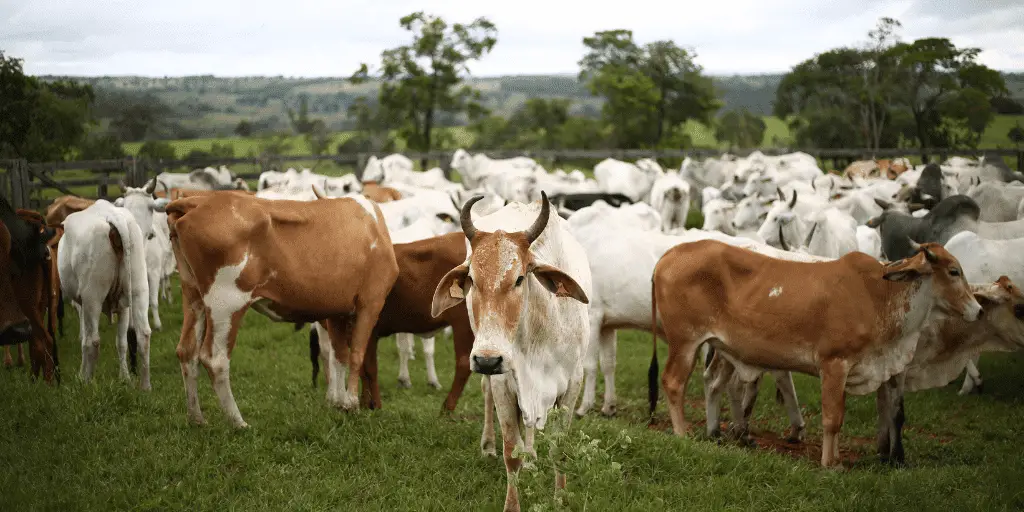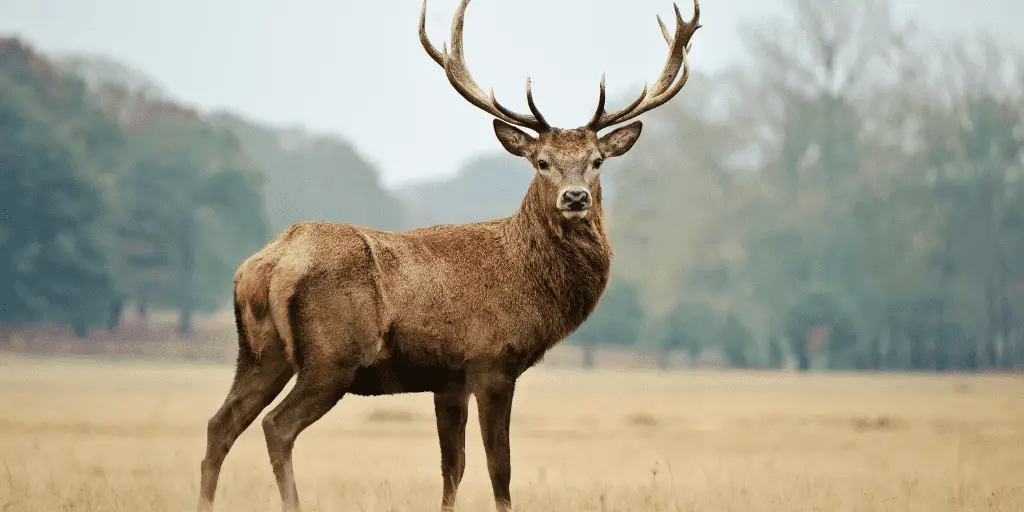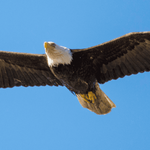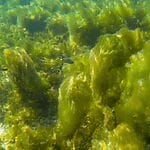Discover the surprising array of animals that feast on corn, a vital energy source shaping ecosystems and farming economies. From farm animals to wildlife, learn how corn influences diets, behaviors, and the delicate balance between nature and agriculture.
Key Takeaways:
- Corn is a fundamental component of farm animal diets, providing energy and nutrients for growth and production in livestock such as cows, pigs, chickens, sheep, and ducks, but its use raises sustainability and ecological concerns due to intensive farming practices.
- Wild animals, including deer, birds, squirrels, and bears, often consume corn from agricultural fields, which can lead to crop damage and necessitate wildlife management strategies to balance agricultural needs with wildlife conservation.
- Corn is not only consumed by typical farm and wild animals but also by unexpected creatures such as giraffes and iguanas, especially when their natural habitats are encroached upon by human agricultural activities.
- The dietary inclusion of corn for animals must be carefully managed to prevent digestive issues and ensure a balanced intake of nutrients, as seen with sheep and iguanas, highlighting the importance of tailored feeding practices.
- The relationship between animals and corn consumption reflects the broader challenges of human-wildlife coexistence, emphasizing the need for sustainable agricultural practices and effective wildlife management to support both ecological health and agricultural productivity.
What Animals Eat Corn?
Cows, pigs, chickens, sheep, ducks, deer, various birds, squirrels, bears, giraffes, and iguanas eat corn, either as a staple or opportunistically.
| Animal Type | Species | Dietary Role of Corn | Conservation and Management Notes |
| Farm Animals | Cows, Pigs, Chickens, Sheep, Ducks | Essential for energy and nutrients; supports growth and production. | Sustainability concerns with intensive farming; need for balanced nutrition and environmental impact consideration. |
| Wild Animals | Deer, Birds, Squirrels, Bears | Opportunistic consumption from fields; can lead to crop damage. | Wildlife management strategies needed to balance agricultural needs with conservation. |
| Unexpected Consumers | Giraffes, Iguanas | Consumed opportunistically due to habitat encroachment by agriculture. | Highlights adaptability and impacts of human agricultural activities on wildlife. |
| Apex Predators | Mountain Lions, Great White Sharks | Rarely a direct threat to humans; precautions include avoiding certain times for activities. | Education on behavior and habitat essential for coexistence. |
| Venomous Creatures | Rattlesnakes, Widow Spiders, Scorpions | Awareness of habitats and prompt medical attention for bites mitigate health risks. | Importance of tailored feeding practices to prevent digestive issues and ensure balanced nutrient intake. |
| Marine and Coastal | Stingrays, Jellyfish | Coastal activities require awareness and preventive measures like the “stingray shuffle” for safety. | Effective wildlife management supports both ecological health and agricultural productivity. |
| Urban Wildlife | Coyotes, Bears | Secure food sources and trash to prevent unwanted interactions. | Addressing lesser-known dangers such as poison oak, ticks, and aggressive yellowjackets through knowledge and avoidance. |
1. Farm Animals and Their Corn Diets

Corn plays a pivotal role in the diets of various farm animals, serving as a cornerstone of modern animal feed due to its rich energy content and nutritional benefits. It’s fascinating to see how this single crop can be transformed into different forms such as whole kernels, cracked corn, and silage to meet the diverse dietary needs of livestock.
These forms are meticulously chosen to support growth, reproduction, and overall health. Economically, corn stands out for its cost-effectiveness and widespread availability, making it a go-to option for farmers looking to feed their animals without breaking the bank.
However, it’s not all about the bottom line. There are sustainability concerns to consider, particularly with monoculture farming practices and the environmental impact of intensive livestock feeding.
The reliance on corn as a primary feed ingredient has sparked discussions about the long-term viability of such farming methods and their ecological footprint. This segment delves into the multifaceted role of corn in agriculture, weighing its undeniable benefits against the challenges it presents.
Cows
When it comes to cattle, corn is more than just feed; it’s a scientific formula tailored to meet specific needs. Dairy cows, for instance, benefit from corn-based feeds that are designed to boost milk production.
The dense energy source that corn provides is crucial for these high-performing animals. In the beef industry, the finishing phase is where corn truly shines, contributing to the desirable marbling and flavor that consumers love in their meat.
The nutritional science behind feed formulations is a delicate balance of starch, fiber, and protein that corn delivers. Yet, the debate between grain-fed and grass-fed cattle raises questions about meat quality, environmental impacts, and animal welfare.
This subsection peels back the layers of corn’s role in cattle farming, presenting a nuanced understanding that’s grounded in current research and industry practices.
Pigs
Pigs are known for their versatile diets, and corn is a staple that fits perfectly into their nutritional puzzle. It’s an energy-rich ingredient that promotes efficient weight gain, which is particularly important in commercial farming. However, a pig’s diet must be balanced with adequate protein and fiber to ensure optimal health and productivity.
The environmental implications of pig farming, especially concerning waste management, are significant. Corn-based diets can influence these factors, and there’s a growing interest in innovations that optimize pig nutrition while reducing ecological footprints. This focus on sustainable practices is reshaping the way pigs are fed and managed.
Chickens
Corn is a key component in chicken feed for both layers and broilers, playing an essential role in poultry health, egg production, and meat quality. Its nutritional composition caters to the high energy needs of chickens, which is vital for their growth and the development of high-quality eggs.
The movement towards natural and organic farming practices has not overlooked the role of corn. However, ensuring a balanced diet is crucial, as corn must be supplemented with other feed ingredients to fulfill all nutritional requirements. The diet of chickens not only affects their health but also the flavor and nutritional content of the poultry products we consume.
Sheep
Sheep diets often include corn as a supplemental energy source, especially during critical periods like late gestation and lactation. The nutritional benefits of corn for sheep are evident in wool production and growth rates. Yet, feeding corn to sheep requires careful management to prevent digestive issues such as acidosis.
Integrating corn with roughage and other feedstuffs is essential for sheep health. Sustainable feeding practices are increasingly important, as they seek to balance productivity with animal welfare and environmental stewardship, ensuring that the needs of the present do not compromise the ability of future generations to meet their own needs.
Ducks
Corn finds its way into the diets of both domesticated and wild ducks, providing a high-energy food source that’s easily accessible. For domesticated ducks in agricultural settings, corn supports growth and health, while wild ducks often forage for corn in fields and water bodies.
Feeding behaviors of ducks are unique, and when it comes to feeding corn, it’s important to maintain a balanced diet and consider the potential impact on water quality in confined settings. Conservation efforts play a role in managing duck populations and their habitats, with responsible feeding practices being a key component.
2. Wildlife and Their Corn Diets

The dance between wildlife and agriculture is a delicate one, with cornfields often serving as an impromptu buffet for a variety of wild animals. These creatures, driven by instinct and necessity, find in corn a valuable source of nutrition.
However, their feasting habits can have profound effects on their own health, behavior, and population dynamics, as well as on the agricultural landscapes that humans cultivate.
Understanding these interactions is crucial for developing strategies that balance the needs of wildlife with those of farmers, ensuring that both can thrive.
Deer
When it comes to agricultural landscapes, deer are perhaps one of the most commonly sighted diners. With a penchant for corn, these graceful animals are drawn to the high-energy kernels, particularly during the fall when they’re building fat reserves for the winter.
Corn provides a readily available feast, but this attraction is not without its consequences. Farmers often find themselves grappling with significant crop damage as deer populations can decimate fields, leading to economic losses.
Moreover, the close proximity between deer and agricultural settings can facilitate the spread of diseases, such as Chronic Wasting Disease, which poses a threat to both wildlife and domesticated animals. To counteract these challenges, various management strategies have been implemented.
Habitat modification, such as planting alternative food sources away from cornfields, can divert deer attention. Fencing, though costly, can be effective in protecting crops. Controlled hunting programs also play a role in maintaining a balance between deer populations and agricultural interests, ensuring that neither gets out of hand.
Birds (Songbirds, Crows, Turkeys)
Birds of all sizes, from the tiny songbirds to the more robust crows and turkeys, are also known to partake in the corn bounty. For these feathered creatures, corn serves as a crucial source of carbohydrates, which is particularly important during migration and in colder months when other food sources are scarce.
The presence of corn can influence flocking patterns, with birds congregating in areas where corn is abundant, which can sometimes lead to significant impacts on crop yields.
However, there’s a silver lining to these gatherings. In areas where natural habitats have been compromised, cornfields can provide a temporary refuge and food source for bird populations.
To foster a harmonious coexistence, bird-friendly agricultural practices, such as leaving a portion of crops unharvested or creating buffer zones with natural vegetation, can be adopted. These practices not only mitigate crop damage but also support avian biodiversity on farmlands.
Squirrels
Squirrels, with their bushy tails and acrobatic antics, are another common sight in both urban and rural areas where corn is present. These small mammals find corn to be a nutritious snack, packed with energy that is especially valuable as they store food for the winter months.
However, their love for corn can lead to conflicts, as they are known to raid corn crops and bird feeders alike, causing frustration for many.
Despite these challenges, squirrels play an important ecological role. They contribute to seed dispersal and forest regeneration, inadvertently aiding in the growth of new plant life.
To mitigate the issues they present, strategies such as providing alternative food sources and using squirrel-proof bird feeders can be effective. Understanding and respecting the role of squirrels in the ecosystem is key to finding solutions that allow for peaceful cohabitation.
Bears
Bears, particularly species like the black bear, are opportunistic feeders with a varied diet that includes corn. As omnivores, they enjoy the high caloric content of corn, which is especially important as they fatten up before hibernation. However, bears’ attraction to cornfields can lead to problematic encounters with humans, as they venture closer to populated areas in search of food.
To reduce the potential for conflict, it’s essential to implement bear-wise practices. Securing garbage, using bear-proof containers, and educating communities about living in bear habitats are all effective measures.
Conservation efforts that focus on maintaining natural food sources can also lessen bears’ dependence on agricultural crops. By promoting strategies that allow bears to access their natural diet, the goal is to foster a landscape where both agriculture and bear populations can coexist without undue interference in each other’s lives.
3. Unusual Corn Consumers

Corn, a staple of many diets, isn’t just for humans or the usual farm animals. There’s a whole array of unusual creatures that have developed a taste for this golden grain, often out of necessity or due to the encroachment of their natural habitats by agriculture.
These animals’ forays into cornfields can be fascinating, revealing the adaptability of wildlife and the complex ways in which different species interact with human environments.
Understanding these interactions is crucial, as it can lead to better wildlife management practices and more sustainable agricultural methods. Let’s take a closer look at some of these unexpected corn consumers and the ecological and nutritional implications of their corn-eating habits.
Giraffes
When picturing a giraffe, one might imagine it gracefully reaching for the highest leaves on acacia trees, not nibbling on rows of corn. However, when their natural habitats overlap with farmlands, these towering mammals might occasionally partake in a cornfield feast.
This behavior is not typical and usually occurs in areas where their preferred food sources are scarce. For giraffes, the leaves of trees are not just food; they are the essence of their survival, providing necessary nutrients and moisture. Corn can serve as a supplementary source of nutrition, especially in regions where human expansion has limited their natural foraging options.
The sight of a giraffe in a cornfield is a stark reminder of the importance of habitat conservation. As their natural environment dwindles, giraffes may venture into cultivated lands, leading to potential conflicts with farmers.
This unusual feeding behavior underscores the need for effective wildlife management strategies that balance the nutritional needs of giraffes with the protection of crops.
Measures such as the creation of wildlife corridors or the implementation of more giraffe-friendly farming practices can help mitigate these issues. It’s a delicate balance, ensuring that these majestic creatures have enough to eat while preventing significant crop damage.
Iguanas
Iguanas, with their scaly skin and spiky backs, are another surprising addition to the list of corn consumers. In the wild, these reptiles feast on a variety of leafy greens, fruits, and flowers. However, those that live near human populations or in captivity might develop a palate for corn.
This can be particularly true in areas where iguanas have become an invasive species, such as in some parts of Florida, where they are known to raid gardens and farms, including cornfields.
For iguanas, corn can be a source of carbohydrates, but it should not be the mainstay of their diet. In captivity, iguanas require a balanced diet rich in a variety of vegetables and fruits to meet their nutritional needs.
Corn can be included as part of this variety, but it should be offered in moderation to prevent nutritional imbalances. Pet owners should be mindful of providing a diet that mimics the diversity of an iguana’s natural intake as closely as possible.
The presence of iguanas in agricultural areas can pose challenges for farmers. These reptiles can become quite a nuisance, feasting on a range of crops and potentially causing significant damage.
In regions where iguanas are considered pests, efforts are made to manage their populations in ways that are humane and environmentally responsible. This might include trapping and relocating the animals or implementing deterrents to keep them away from crops. The goal is to find solutions that protect both the agricultural interests and the well-being of the iguanas.
The inclusion of corn in the diets of animals like giraffes and iguanas is a testament to the interconnectedness of all species within the food web. It also highlights the impact of human activities on wildlife and the importance of considering these effects when managing both animal populations and agricultural practices.
By understanding the dietary habits of these unusual corn consumers, we can work towards creating a more harmonious coexistence between humans, our crops, and the diverse wildlife that shares our planet.
Conclusion
In conclusion, corn is a versatile and energy-rich food source that is integral to the diets of many animals, both domesticated and wild. Farm animals such as cows, pigs, chickens, sheep, and ducks rely on corn for its nutritional value, which supports their growth, health, and productivity.
However, the sustainability of corn as a primary feed and its environmental impact are important considerations in modern agriculture. Wildlife species, including deer, birds, squirrels, and bears, also consume corn, often resulting in complex interactions with human agricultural practices.
These interactions can lead to challenges such as crop damage and the need for wildlife management strategies that balance ecological health with agricultural productivity. Additionally, less typical corn consumers like giraffes and iguanas illustrate the adaptability of wildlife to human-altered landscapes and the importance of sustainable practices to mitigate potential conflicts.
Overall, the article highlights the widespread role of corn in animal diets and the interconnectedness of agricultural systems with the natural world, emphasizing the need for thoughtful management to ensure the well-being of all species involved.








